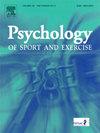动机,运动和活力:自我决定理论及其作为人类繁荣一部分的身体活动的有机视角
IF 3.3
2区 心理学
Q2 HOSPITALITY, LEISURE, SPORT & TOURISM
引用次数: 0
摘要
Ntoumanis和Moller回顾了25年来自决理论(SDT)的研究,作为《运动心理学》25周年特刊的一部分。他们描述了许多关键命题,实证研究结果,以及该理论在体育活动(PA)领域的实际应用。在这篇简短的评论中,我强调了SDT的有机假设以及PA与SDT关注繁荣的相关性。正如从婴儿期及以后观察到的那样,PA具有内在动机,但正如SDT研究表明的那样,作为需求支持或需求阻碍的社会条件的功能,运动和身体活动的内在倾向可以增强或削弱。此外,许多类型的PA是工具性的,而不是内在的,因此维持它们需要内化,这是一个在理论中很详细的过程。SDT对主观活力的研究也很突出,主观活力是一种与PA直接相关的心理结构,也受到自主动机和受控动机的影响。最后,在Ntoumanis和Moller的讨论的基础上,我列举了SDT研究和实践的其他未来方向,包括神经心理学基础,群体或团队环境中的动机动力学,以及普遍存在的社会因素(如久坐不动的工作方式和媒体使用)对人们参与PA的影响。鉴于SDT是一个关注人类繁荣的有机视角,PA研究将继续与其目标高度相关。本文章由计算机程序翻译,如有差异,请以英文原文为准。
Motivation, movement, and vitality: Self-determination theory and its organismic perspective on physical activity as part of human flourishing
Ntoumanis and Moller review 25 years of self-determination theory (SDT) research as part of Psychology of Sport and Exercise's 25th Anniversary Special Issue. They delineate many of the key propositions, empirical findings, and practical applications of the theory in the domain of physical activity (PA). In this brief commentary, I highlight the organismic assumptions of SDT and the relevance of PA to SDT's focus on flourishing. PA is intrinsically motivated, as observed from infancy and beyond, but as SDT research has shown, the inherent propensities to move and be physically active can be enhanced or undermined as a function of need-supportive or need-thwarting social conditions. Further, many types of PA are instrumental rather than intrinsically motivated, such that sustaining them requires internalization, a process well detailed within the theory. Also highlighted is SDT research on subjective vitality, a psychological construct with direct ties to PA, as well as being influenced by autonomous versus controlled motives. Finally, building on Ntoumanis and Moller's discussion, I enumerate additional future directions for SDT research and practice including neuropsychological underpinnings, motivational dynamics in group or team settings, and the influence of pervasive social factors such as sedentary work styles and media use on people's participation in PA. Given that SDT is an organismic perspective focused on human flourishing, PA research will continue to be highly relevant to its aims.
求助全文
通过发布文献求助,成功后即可免费获取论文全文。
去求助
来源期刊
CiteScore
6.40
自引率
5.90%
发文量
172
审稿时长
69 days
期刊介绍:
Psychology of Sport and Exercise is an international forum for scholarly reports in the psychology of sport and exercise, broadly defined. The journal is open to the use of diverse methodological approaches. Manuscripts that will be considered for publication will present results from high quality empirical research, systematic reviews, meta-analyses, commentaries concerning already published PSE papers or topics of general interest for PSE readers, protocol papers for trials, and reports of professional practice (which will need to demonstrate academic rigour and go beyond mere description). The CONSORT guidelines consort-statement need to be followed for protocol papers for trials; authors should present a flow diagramme and attach with their cover letter the CONSORT checklist. For meta-analysis, the PRISMA prisma-statement guidelines should be followed; authors should present a flow diagramme and attach with their cover letter the PRISMA checklist. For systematic reviews it is recommended that the PRISMA guidelines are followed, although it is not compulsory. Authors interested in submitting replications of published studies need to contact the Editors-in-Chief before they start their replication. We are not interested in manuscripts that aim to test the psychometric properties of an existing scale from English to another language, unless new validation methods are used which address previously unanswered research questions.

 求助内容:
求助内容: 应助结果提醒方式:
应助结果提醒方式:


